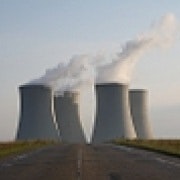Why Wiluna is worth watching
What could be Western Australia’s first uranium mine is unlikely to turn a profit unless costs to clean up the mine can be made to disappear.
Our modelling of the economics of Toro Energy’s Wiluna uranium project found that the mine is unviable if Toro Energy has to pay even optimistic estimates for the decommissioning and rehabilitation of the site.
The public and the environment have quite a stake in most mining projects and uranium projects in particular. Not only is it the public’s own mineral resources that are being sold – it’s often forgotten that all mineral resources are held by the Crown in the name of the public – but the environmental impacts of mine closure can be serious if not carried out properly.
Properly cleaning up a uranium mine can be an expensive business, so here’s why the public should be interested in the finances of mining projects – if in 2030 Toro Energy cannot foot the bill, Western Australians will face the unpleasant choice of paying the bill or accepting a degraded, potentially radioactive landscape.
This is not just idle speculation. Most mine closures occur not because the resource has run out, but for economic reasons such as change in resource price, increases in costs, or unexpected changes in resource quality. So ensuring closure costs are built into the economics of the project is very important for the public.
So how do the economics of the Wiluna project stack up? According to our modelling – based on Toro Energy’s own cost figures – not well.
Assuming a real (ie inflation adjusted) price of $US65 per pound for long-term uranium contracts and an exchange rate steadily declining to 0.85, our model suggests a value for the Wiluna project of around $A34 million. This price is well above current contract prices of $US55-60 per pound and spot prices of around $US42 per pound. Most analysts are expecting some increase as Japan restarts some nuclear reactors post Fukushima and new projects begin in China and Russia.
So $34 million in the black, so far so good. But importantly, this excludes closure costs, as no estimate of how much this might cost is available in the public domain, as far as we are aware.
So how much might it cost to close the Wiluna project and will the developers be able to afford this cost? Uranium projects in Europe and the US have reported closure costs of between $US10 and $US14 per pound of uranium produced. Even the lower end of that range suggests a closure cost for Wiluna of around $150 million. Even if this wasn’t payable as an upfront bond – which the WA government requires – the project would still be unviable under our modelling.
For serious uranium investors, however, this discussion is academic. Investors are looking for lower costs and higher volumes than Wiluna can provide. The Wiluna project is a small resource with limited expansion opportunities and on a pound for pound basis it is far more expensive than most other proposed projects elsewhere in the world, particularly Kazakhstan and Canada. If prices do manage to climb to $65 per pound or above, many of these larger projects will come online instead of smaller projects like Wiluna.
The public and the WA government need to have a good understanding of the financial aspects of this project. It is unlikely to attract investment from the major uranium players in the medium-term – companies big enough to afford serious closure costs. If a minor company such as Toro Energy were to attempt to develop the project, we must be sure that they will be able to finance an expensive clean-up operation when the project ends.
Rod Campbell is a director of Economists at Large and was commissioned by WA Greens Senator Scott Ludlam and the Anti-Nuclear Alliance of WA to conduct analysis of the Wiluna project. The full report is available at www.ecolarge.com.















